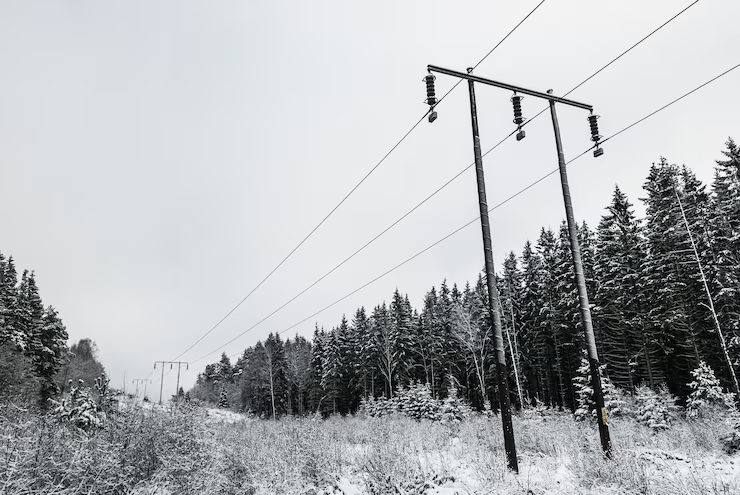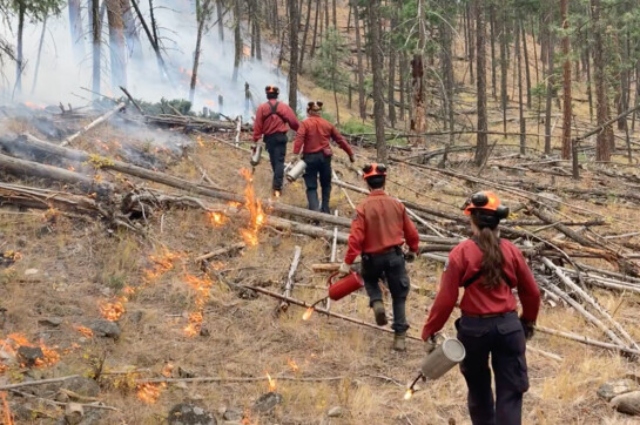Eaton Wildfire Response: Evacuation and Emergency Lessons
Table of Contents:
- Introduction
- Understanding the Eaton Wildfire
- The Eaton Wildfire Response: What Happened
- Evacuation Lessons Learned
- Emergency Preparedness: What We Must Improve
- Main Content: 5 Questions Answered
- After the Smoke Clears: Recovery and Support
- Building a Fire-Resilient Future
- Final Thoughts
- Call to Action – We Are Eaton Fire
Introduction
The threat of wildfires in the American West continues to escalate, fueled by climate change, drought, and expanding suburban development. In the town of Eaton, residents recently faced one of the most devastating natural disasters in their history. The Eaton wildfire response serves as a critical case study on how communities, governments, and emergency services can and must prepare for the rising dangers of megafires.
This blog aims to provide a detailed breakdown of what happened, what worked, where the response fell short, and what lessons can be drawn for future emergencies. With evacuation protocols, emergency preparedness, and community resilience at the heart of this issue, it’s time we dive deep and learn from the flames.
Understanding the Eaton Wildfire

While one faulty transformer may seem minor in isolation, in the dry and volatile conditions Eaton was experiencing, it became the catalyst for a rapidly escalating catastrophe. On the day the fire ignited, the region was under a red flag warning signaling an extreme risk of fire due to:
- Sustained winds over 30 mph, with gusts surpassing 50 mph
- Record-setting temperatures reaching over 100°F
- Single-digit humidity levels
- Highly combustible vegetation, including dried grasses, chaparral, and pine duff
Once the spark ignited, embers were picked up by strong winds. They carried miles ahead of the fire line a phenomenon known as spotting, which allowed the blaze to leap across roads and natural barriers, igniting new fires and complicating containment efforts.
Within the first 48 hours of ignition:
- Over 12,000 acres of land were consumed
- More than 4,000 residents were ordered to evacuate
- Dozens of homes and commercial buildings were reduced to ashes
- Critical infrastructure, including power lines, cell towers, and roads, was either damaged or shut down
- Natural areas, such as Eaton Regional Park and parts of the Eaton Wildlife Corridor, suffered extensive ecological loss
The fire’s intensity was so great that satellite thermal imaging detected heat signatures from space, and smoke plumes traveled hundreds of miles, triggering air quality alerts in neighboring counties.
This explosive fire behavior left residents and first responders alike racing against time, a critical test for the Eaton wildfire response systems that had been theoretically prepared but never tested on this scale.
Geographic and Environmental Context: The Wildland-Urban Interface
To truly grasp why the Eaton Fire spread so aggressively and caused such profound damage, we need to examine the geographic layout and environmental makeup of Eaton and its surrounding regions.
Eaton is a mid-sized town nestled at the intersection of suburban development and wildlands, an area referred to as the wildland-urban interface (WUI). This zone is where homes, infrastructure, and human activity directly border natural landscapes, such as forests, grasslands, and scrublands. It’s also where wildfire risk is exponentially higher due to a deadly combination of factors.
Key Environmental Factors Contributing to Fire Spread:
In the months leading up to the fire, Eaton experienced an unseasonably wet spring followed by a bone-dry summer. This allowed thick underbrush and invasive plant species like cheatgrass to proliferate, only to dry out and become volatile tinder as temperatures climbed.
2. Lack of Defensible Space
Despite public safety campaigns, many properties in the area had limited or nonexistent defensible space, the buffer zone between a home and flammable vegetation. Overgrown hedges, dry grass lawns, wooden fencing, and accumulated debris created continuous fuel beds right up to people’s front doors.
3. Slope and Elevation
Parts of Eaton sit on undulating terrain, with several neighborhoods built along hillsides. Fires move significantly faster uphill due to the preheating of vegetation above the flames. In several cases, the fire climbed 300-foot elevations in minutes, surprising residents and responders.
4. Urban Encroachment
In recent years, Eaton has seen a boom in real estate development. Many new homes were built closer to wildland areas without incorporating fire-resistant materials or landscaping, making them uniquely vulnerable to ember attacks.
5. Infrastructure Vulnerability
Power lines, aged transformers, and above-ground utility poles compounded the danger. With high winds and overgrown vegetation, even routine infrastructure became a hazard. When the fire approached the town perimeter, exploding transformers and burning power lines became common, triggering spot fires and further complicating evacuation efforts.
6. Why WUI Zones Matter
The Eaton Wildfire Response: What Happened

- Day 1: Fire is reported around 10:45 a.m. Emergency responders are dispatched within 20 minutes.
- Day 2: Fire spreads to 6,000 acres. First mandatory evacuation orders issued.
- Day 3: Fire doubles in size. State and federal resources arrive, including aerial support.
- Day 5: Weather conditions improve slightly. 35% containment achieved.
- Day 10: Fire declared 100% contained. Damage assessments and recovery planning begin.
The Eaton wildfire response involved a complex coordination between:
- Local fire departments (Eaton, neighboring districts)
- State-level fire marshals
- FEMA and the National Guard
- Nonprofit relief organizations (Red Cross, Salvation Army)
- Local volunteers
Evacuation Lessons Learned
Extraordinary efforts from emergency personnel marked the Eaton wildfire response, yet the evacuation process exposed critical weaknesses that must be addressed before the next disaster strikes. Wildfires develop quickly, and every second counts when systems break down, whether technological, logistical, or human, the consequences can be catastrophic.
Below, we examine the top three evacuation challenges observed during the Eaton Fire and what they teach us about improving future wildfire responses.
1. Communication Systems Need Upgrades
During the Eaton wildfire, countless residents reported confusion over when, how, and whether they should evacuate. Some received reverse 911 calls or wireless emergency alerts (WEAs) on their phones, while others only found out through neighbors knocking on doors, scrolling social media, or hearing about it via word-of-mouth.
For a fire that moved as quickly as Eaton’s did, consuming thousands of acres in just two days, this lack of unified communication had life-threatening consequences.
What Went Wrong:
Emergency alerts were heavily dependent on cell towers, internet access, and power, all of which were compromised early in the fire. As flames advanced, utility poles burned and signals dropped. Without redundancy systems, entire neighborhoods were effectively cut off.
Sirens, loudspeakers, and two-way radios were underutilized or absent in many districts. These tools could have reached elderly residents, people without smartphones, and those living in rural zones, but weren’t integrated into the response.
Some alerts were issued county-wide, which was confusing. Others were so hyper-targeted that residents blocks from the fire received no warning at all. The inconsistency eroded trust in official sources.
During the Eaton wildfire response, there was no single website, app, or radio channel where residents could get real-time updates verified by emergency managers. Misinformation spread quickly, leading to panic and risky decisions.
What Must Change:
- Implement multi-channel alerts (text, voice, social media, door-to-door, sirens)
- Fund and test solar-powered alert sirens in at-risk neighborhoods
- Develop a localized wildfire dashboard for real-time updates and evacuation routes.
- Encourage residents to register landlines and cell numbers with emergency services.
2. Traffic Bottlenecks Cost Precious Time
When evacuation orders were finally issued, thousands of residents flooded into a limited number of escape routes. Eaton’s small-town infrastructure, designed for local commuting, was not engineered to handle a rapid, large-scale evacuation. The result? Dangerous delays, abandoned vehicles, and widespread panic.
Real Scenarios:
- Residents trying to leave the southeast quadrant of town found themselves stuck in bumper-to-bumper traffic for over two hours as a wall of smoke closed in.
- Intersections without traffic officers or working lights became chaos zones. People drove onto sidewalks, into ditches, and in some cases, against traffic to get out.
- Several fire trucks attempting to enter affected areas were delayed by evacuees clogging key access roads, reducing the efficiency of the Eaton wildfire response.
- Narrow, two-lane exit roads with no alternative routes
- Lack of traffic marshals to direct evacuees and coordinate emergency access
- No use of contraflow strategies, the emergency tactic where all lanes of a roadway are converted to one direction for faster escape
- Unclear signage and roadblocks that sent drivers in circles
- Conduct traffic simulations during annual wildfire drills to test exit capacity.
- Designate and pre-publicize evacuation zones with staggered timing.
- Install permanent contraflow-ready infrastructure on main roads.
- Train police and fire teams in real-time traffic management during wildfires.
Evacuation is not just about speed; it’s about order and strategy. Without a tested plan, chaos prevails.
3. Unprepared Residents Delayed Their Safety
Even when alerts reached residents on time, many chose to wait and see if the fire would get worse before evacuating. Others began frantically packing at the last minute, unsure of what to bring or where to go. This hesitation didn’t just endanger their lives; it put additional stress on emergency responders who had to return to areas already evacuated to rescue stragglers.
Key Issues Observed:
- Overpacking or packing the wrong items. Some residents attempted to take large furniture, memorabilia, or multiple pets without carriers, which slowed down the departure.
- No clear evacuation destination. Many people had no idea where to go, especially those without friends or relatives in nearby towns. Shelters were overwhelmed quickly, and some evacuees slept in cars or public parks.
- Lack of preparedness kits. According to post-fire surveys, only 35% of households had go-bags or emergency kits ready. That means 65% of families had to prepare under extreme stress.
- Denial: “It won’t reach our home.”
- Attachment: “I can’t leave without this or that.”
- Uncertainty: “We haven’t heard anything official yet.”
Even the best Eaton wildfire response team can’t save people who don’t act in time. Personal responsibility plays a significant role in survival.
What Must Change:
- Encourage all households to prepare go-bags with essentials: IDs, medication, clothes, pet supplies, chargers, food, and water.
- Launch public information campaigns about what to expect during wildfire evacuation.
- Implement school-led family evacuation education programs to reach parents through students.
- Provide annual evacuation map mailers to all households, including multiple shelter options.
Emergency Preparedness: What We Must Improve

- No regular evacuation drills for neighborhoods or schools
- Limited fire buffer zones around residential areas
- Underutilization of local leaders and neighborhood watches
- Many homes lacked fireproof materials (roofs, vents, siding)
- Few had emergency water tanks or backup generators
- Several pets and livestock were left behind due to poor planning
- Mandatory fire evacuation training at community centers and schools
- Distribution of emergency kits to high-risk populations
- Property inspections to ensure defensible space compliance
Main Content: 5 Questions Answered
The Eaton wildfire response was commendable in terms of firefighter bravery and inter-agency collaboration. Containing a fire of this magnitude in just 10 days is impressive. Cracks in evacuation planning and communication, however, hampered the overall efficiency. The courage was there, but the coordination still needs work.
2. What were the most significant challenges during evacuation?
- Late alerts
- Congested roads
- Panic and misinformation
- Vulnerable individuals without transportation
Emergency services did the best they could, but these issues underscore the need for real-time traffic control, backup communication lines, and pre-registered evacuation assistance for the disabled and elderly.
3. What role did technology play in managing the response?
Technology was both a blessing and a curse:
- Drones and infrared mapping helped fire crews monitor hot spots
- GIS data helped plot safe zones and evacuation routes
- Cellular alerts failed in areas where towers were damaged
Future responses must integrate resilient tech systems, including satellite-based communication and analog backups (like community sirens).
4. Were pets and animals considered in the evacuation plans?
Unfortunately, many residents had to leave their pets behind. While some animal rescue groups stepped in, there was no official animal evacuation protocol. In the future, animal rescue logistics from horses to hamsters must be integrated into fire response plans.
5. How can we better protect homes from future wildfires?
- Replace wood roofs with metal or tile alternatives
- Use fire-resistant siding and install ember-resistant vents
- Maintain at least a 30-foot defensible space around homes
- Regularly clear gutters and debris
After the Smoke Clears: Recovery and Support
Local officials have already begun planning:
- Utility repairs
- Road reconstruction
- Improved water pressure systems for firefighting
Federal aid is supplementing state resources to ensure faster turnaround.
Financial Assistance for Families
Disaster relief grants are available for:
- Home repairs
- Temporary housing
- Medical needs
However, accessing these programs has proven difficult for some; therefore, better communication about how to apply, when, and where is vital.
Mental and Emotional Healing
Fire trauma runs deep. Eaton has launched counseling services to help residents process:
- Fear and panic from the evacuation
- Grief over lost homes and pets
- Anxiety about future disasters
Building a Fire-Resilient Future
Eaton must adopt:
- Regular evacuation drills
- Annual community fire safety audits
- Public forums with fire chiefs and planners
- Investment in fire-resistant infrastructure and vegetation control
We must shift the mindset from “this won’t happen to me” to “when it happens, I’ll be ready.”
- Distribute fire preparedness kits at local events
- Integrate wildfire education into school curricula
- Host online webinars and in-person workshops for residents
Final Thoughts
The Eaton wildfire response proved that while our emergency services are brave and committed, they can only succeed if supported by prepared citizens, innovative infrastructure, and proactive planning. This fire was a wake-up call, one that can’t be ignored.
Wildfires are no longer seasonal. They are constant threats. And unless we act now, the subsequent fire may be worse.
Eaton Fire stands at the forefront of education, prevention, and recovery. We’ve learned a lot. And we’re determined to do better.

Call to Action – We Are Eaton Fire
At Eaton Fire, we don’t just put out fires; we prevent them, plan around them, and help communities rise stronger from the ashes.
🔥 Have you prepared your home and family for the next wildfire?
Take action today:
✅ Join our next Preparedness Workshop
Let’s protect Eaton. Let’s protect each other. We are Eaton Fire.

